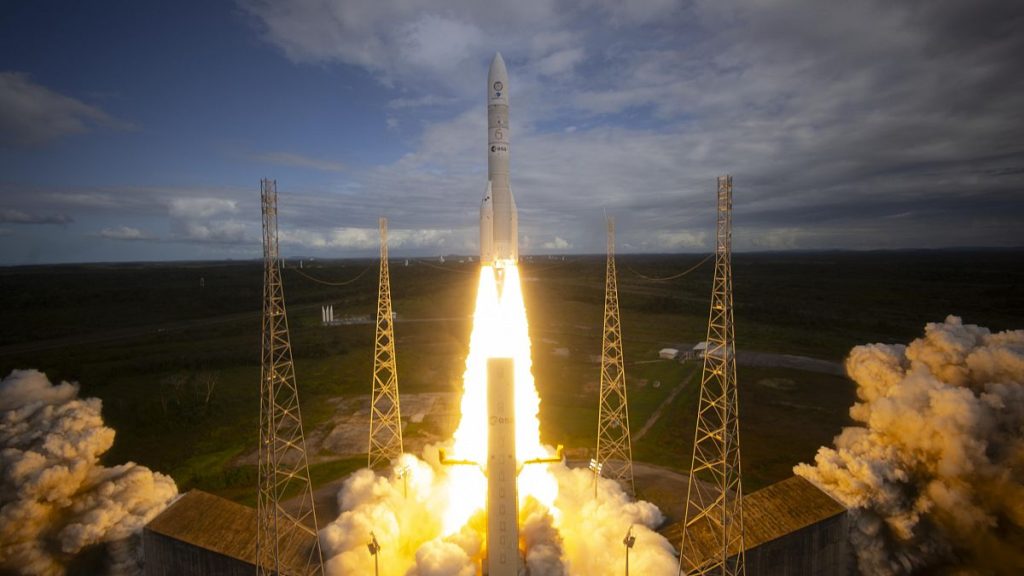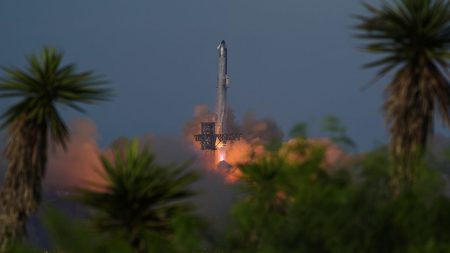2024: A Year of Progress and Challenges in Space Exploration
The year 2024 witnessed significant strides in global space activities, marked by a surge in orbital rocket launches, both commercial and governmental. SpaceX dominated the launch landscape with an impressive 134 missions, showcasing the growing reliability and cost-effectiveness of its Falcon 9 and Falcon Heavy rockets. The company also conducted three test flights of its ambitious Starship, a vehicle designed for deep space travel, hinting at future interplanetary ambitions. Europe, while lagging behind in launch frequency, achieved a crucial milestone with the debut of its Ariane 6 heavy-lift rocket, restoring its independent launch capability after years of delays. This new rocket, while offering a cheaper alternative to its predecessor, faced criticism for its expendable design in contrast to SpaceX’s reusable approach. The European Space Agency (ESA) also launched the Proba-3 mission, a pioneering endeavor to create an artificial solar eclipse for in-depth study of the Sun’s corona and its impact on space weather. This research aims to improve predictions of solar storms and their potential disruptions to satellites, communication networks, and power grids on Earth. However, the year also brought setbacks, notably the aborted Boeing Starliner test flight, which left two NASA astronauts stranded in space due to technical malfunctions. Their return to Earth underscored the inherent risks of space travel and the ongoing challenges in developing reliable crew transportation systems.
2025: The Dawn of New Launch Capabilities and Regulatory Frameworks
Looking ahead to 2025, the space sector anticipates a further intensification of activities, with a focus on expanding launch infrastructure and establishing regulatory clarity. Europe is poised to achieve a historic first: an orbital launch from its own soil, rather than relying on the Kourou spaceport in French Guiana. Both the Swedish Space Corporation (SSC), in collaboration with South Korean partner Perigee Aerospace, and the Saxavord Spaceport in the British Isles are vying to be the first to conduct an orbital launch from European territory, marking a significant shift in the continent’s space launch capabilities. This new launch infrastructure is expected to catalyze further growth in the European space industry and reduce reliance on external launch providers. Alongside these terrestrial developments, the increasing number of satellites and rockets in orbit has raised concerns about space debris and the long-term sustainability of space activities. In response, the European Union is working on its first comprehensive Space Law, anticipated in 2025, which aims to address the escalating problem of space debris and establish clear guidelines for responsible space operations.
Advanced Propulsion Systems: A Key Enabler for Future Space Missions
As the space industry matures and expands beyond Earth’s orbit, the need for advanced propulsion systems becomes increasingly critical. While SpaceX has revolutionized access to low Earth orbit, the limitations of current chemical propulsion become apparent for missions further afield. Companies like Pulsar Fusion are developing cutting-edge electric in-space propulsion systems, designed to operate efficiently in the vacuum of space and enable longer-duration missions and more complex maneuvers. These new propulsion technologies are essential for realizing ambitious goals such as deep space exploration, lunar missions, and the establishment of permanent bases beyond Earth. They represent a crucial step towards a more sustainable and efficient space ecosystem.
The Rise of Mega-Constellations and the Growing Need for Space Traffic Management
The year 2025 is also expected to see a significant increase in the deployment of large satellite constellations, such as Amazon’s Kuiper Systems, which plans to launch over 3,000 satellites. This rapid growth in satellite numbers raises concerns about space debris, orbital congestion, and the potential for collisions. Effective space traffic management systems will be crucial for mitigating these risks and ensuring the safety and sustainability of space operations. International cooperation and the development of clear regulatory frameworks will be essential for addressing these challenges and preventing the space environment from becoming overcrowded and hazardous.
2025: A Year of Maiden Flights and Continued Exploration
Beyond the development of new launch infrastructure and propulsion systems, 2025 is slated for several important maiden flights and continued advancements in space exploration. ESA plans to conduct an orbital test flight of its Space Rider uncrewed spaceplane, a reusable vehicle designed for a wide range of missions, from technology demonstrations to scientific research. The first commercial launch of Ariane 6 is also scheduled, carrying a French military reconnaissance satellite. Meanwhile, SpaceX will continue its ambitious Starship development program, with another test flight planned for early in the year. These milestones represent significant steps forward in expanding human capabilities in space and paving the way for future deep space missions.
The Future of Space Exploration: Collaboration, Sustainability, and Innovation
As the space sector continues its rapid expansion, the focus on collaboration, sustainability, and innovation will be paramount. International partnerships, such as those between the Swedish Space Corporation and Perigee Aerospace, demonstrate the growing importance of global cooperation in advancing space exploration. The development of reusable launch vehicles, advanced propulsion systems, and effective space debris mitigation strategies will be critical for ensuring the long-term sustainability of space activities. As we move further into the 21st century, space exploration holds immense potential for scientific discovery, economic growth, and technological innovation. By prioritizing responsible and sustainable practices, we can ensure that the benefits of space are accessible to all of humanity for generations to come.














